How to grow Chamaecyparis
Also known as false cypress, chamaecyparis is a small genus of around 7 species of evergreen, coniferous tree. Apart from one species from the east coast of North America (Chamaecyparis thyoides), these all originate from land bordering the Pacific Ocean i.e., the west coast of North America, and Japan.
Naturally, chamaecyparis is a large, stately tree with a distinctive drooping ‘leader’, and scale-like foliage held in flat sprays which emits a pungent, parsley-like scent when crushed. The foliage can be remarkably different on seedlings and juvenile plants (soft and needle-like), which can cause confusion when identifying young specimens. The cones are spherical, and pea sized.
The popularity of this genus as a UK garden staple comes from the tendency of one of the species (Chamaecyparis lawsoniana, or Lawson’s cypress) to produce an array of mutations offering variations in form and colour. This means there is a wide range of cultivars available – from dwarf and slow-growing forms suitable for rock gardens and bonsai, to those with attractive golden or blue-green foliage, or pendulous or twisted branches. Add to this a long-lasting, hardy, reliable, low maintenance nature and it’s not hard to see why chamaecyparis is one of the nation’s favourite conifers.
Chamaecyparis is not to be confused with the true cypresses, the most widely cultivated of which is the classic Mediterranean species Cupressus sempervirens – the narrow, pointed columns of Italian driveways and Greek olive groves. While initially similar to look at these can be distinguished by the branching of foliage sprays, which are not just on a flat horizontal plane like false cypresses, but grow upwards and downwards as well. True cypresses also have much larger cones.
Another tree easily confused with chamaecyparis is thuja. Thuja occidentalis is second only to the Lawson’s cypress in producing variations in colour, form, and size, and is consequently another stalwart of UK gardens. Its foliage also held in flattened sprays, though when compared to chamaecyparis these are generally greener, simpler, and flatter. The best way to recognise thuja is the smell – its foliage emits a pungent, pineapple-like scent when brushed past or crushed.
For anyone wondering where the famous Leyland cypress (x Cuprocyparis leylandii) fits in – this is a naturally occurring hybrid between a false cypress (Chamaecyparis nootkatensis) and a ‘true’ cypress (Cupressus macrocarpa), with hybrid vigour resulting in a growth rate which dwarfs either of its parents. Offering fast, dense results, it has been popularly used as domestic hedging and screening, though the astonishing size reached when not kept in check has been the source of many neighbourly disputes.
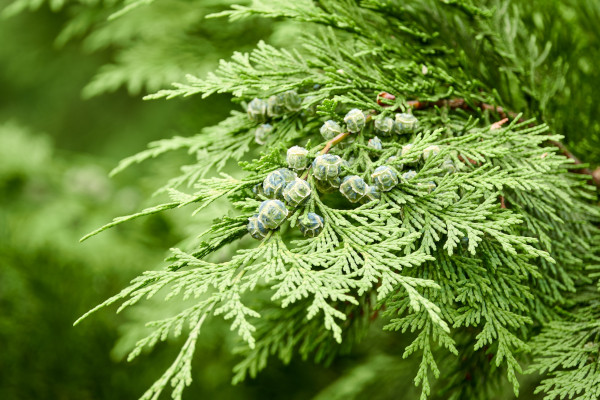
Key Information
Position
Soil Conditions
Hardiness

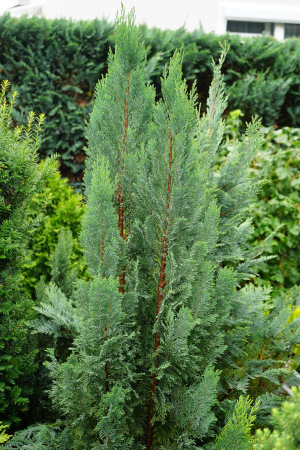
Where & when to plant Chamaecyparis
Chamaecyparis usually comes as a pot grown plant. This means it can be planted at any time of year, though for best results, plant in autumn or spring when the soil temperature and moisture content are at optimum levels for healthy root establishment. An autumn planting can be done by those gardening in mild conditions (and broadly speaking, this is the southern half of the UK). For those liable to cold winters, it is best to wait until spring (generally the northern half of the UK).
Plant large species and cultivars as specimen trees in a lawn, tall screening, or hedging. Chamaecyparis can cope with an exposed, windy spot when mature, though will need some form of windbreak protection whilst establishing.
Smaller, slow-growing species can be grown in a patio container, and even moved indoors for several weeks as a Christmas tree (C. thyoides ‘Top Point’ is especially well-suited to this). It is important to repot these into a slightly larger container every few years, and eventually plant out into the open ground. Other uses include evergreen interest in a border, rock garden, or grown as a low hedge.
How to plant Chamaecyparis
- For planting into the ground, start by watering the roots well and allowing them to drain before planting.
- If you are planting into grass, remove a circle of grass at least 1m in diameter.
- Dig the soil area over, removing any large stones and weeds and breaking up any lumps. Mix in a generous amount of organic matter such as manure or garden compost.
- Rake level and firm with your heels. Rake level again.
- Now dig the planting hole, aiming for twice the width of the rootball.
- Place the plant in the hole, ensuring the top of the rootball sits level with the surface of the soil. Too low and the stem can rot, too high and the roots can dry out.
- Backfill with soil and firm in gently with your foot.
- Soak well with water.
- Mulch around the base with well-rotted organic matter such as manure or garden compost.
- For planting in containers (smaller forms are best for this), first choose an appropriately sized pot. The best practice is to start just a few centimetres larger than the root ball and go up in size gradually every year or so. Always ensure there are plenty of drainage holes in the bottom.
- Again, water the roots thoroughly and allow to drain before potting.
- It can be a good idea to fill and plant your pot in situ to save yourself the trouble of moving it once full.
- Use a good quality potting compost with plenty of horticultural grit mixed in, and, if not already present in the compost (check the description on the bag) some slow-release fertiliser granules.
- Start by partially filling the pot with compost; enough so that when placed on it the top of the roots sit about 3cm lower than the top of the pot.
- Infill all the space surrounding the roots with compost, firming down with your fingers then adding a little more so the plant is held tight. Again, remember to ensure the graft union sits just above the surface of the compost.
- Pick up the pot (if you can!) and lightly tap on the potting bench or ground a few times to help further settle the compost around the plant.
- Soak well with water.
- A mulch with horticultural grit will look attractive and help to prevent a ‘cap’ or crust forming on the top of the compost (something container plants can suffer due to the artificial nature of their watering).
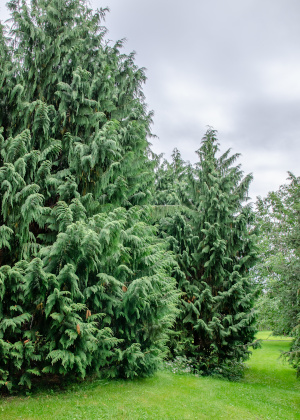
What to plant with Chamaecyparis
Use chamaecyparis as part of an easy, low-maintenance, evergreen planting scheme, with companions such as abies, ilex, buxus, euonymus, sarcococca, and pittosporum offering a pleasing range of textures and forms.
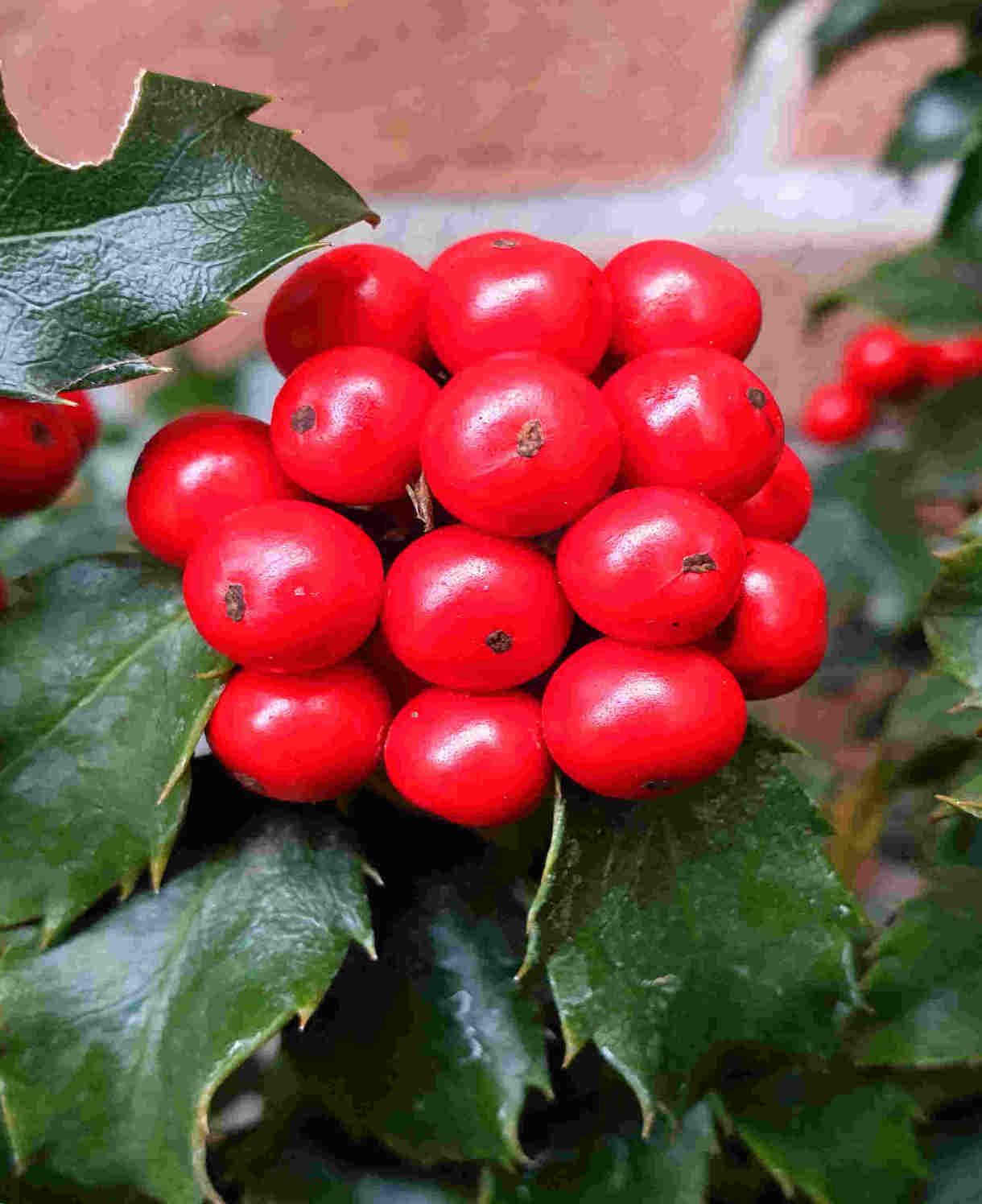
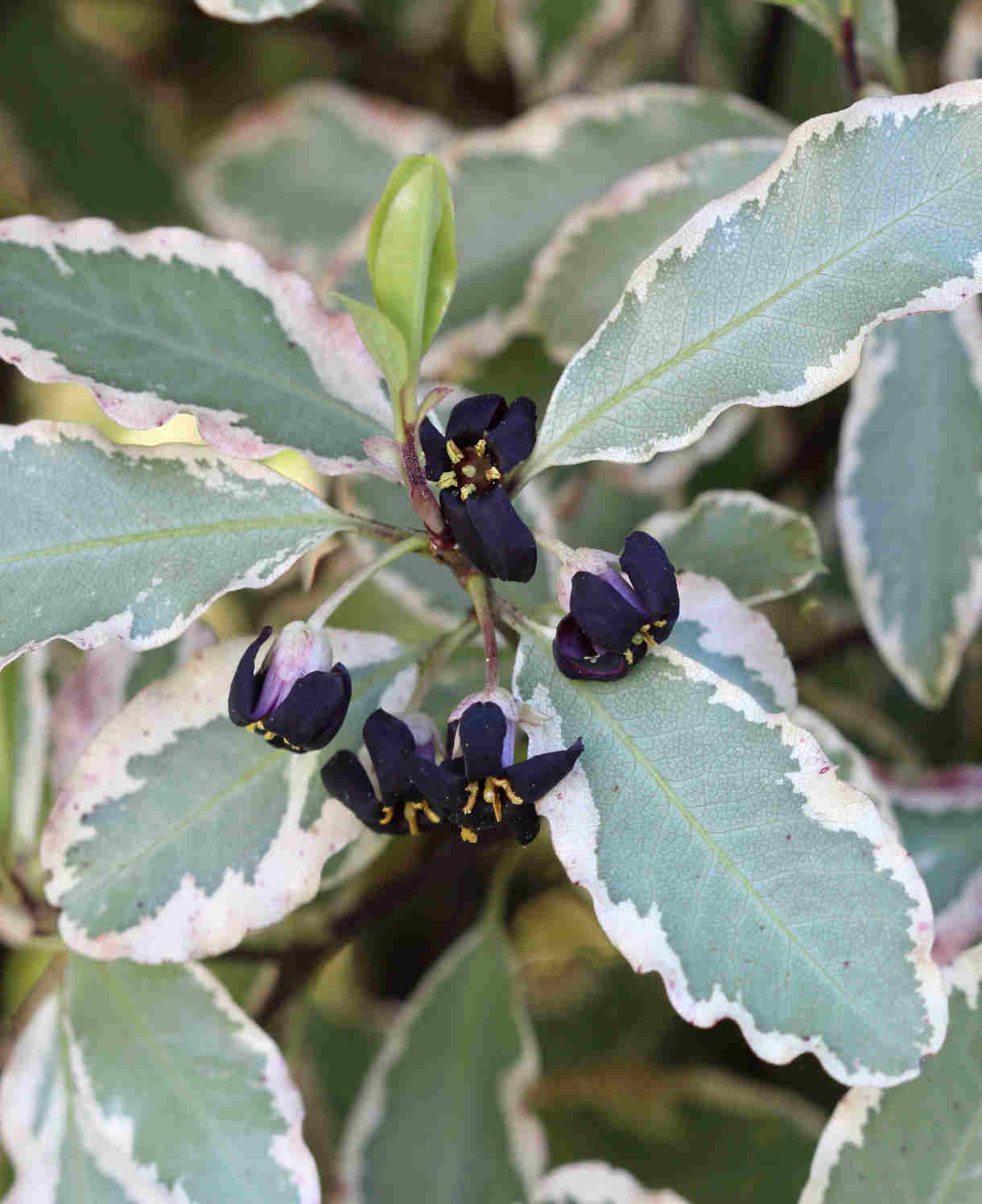
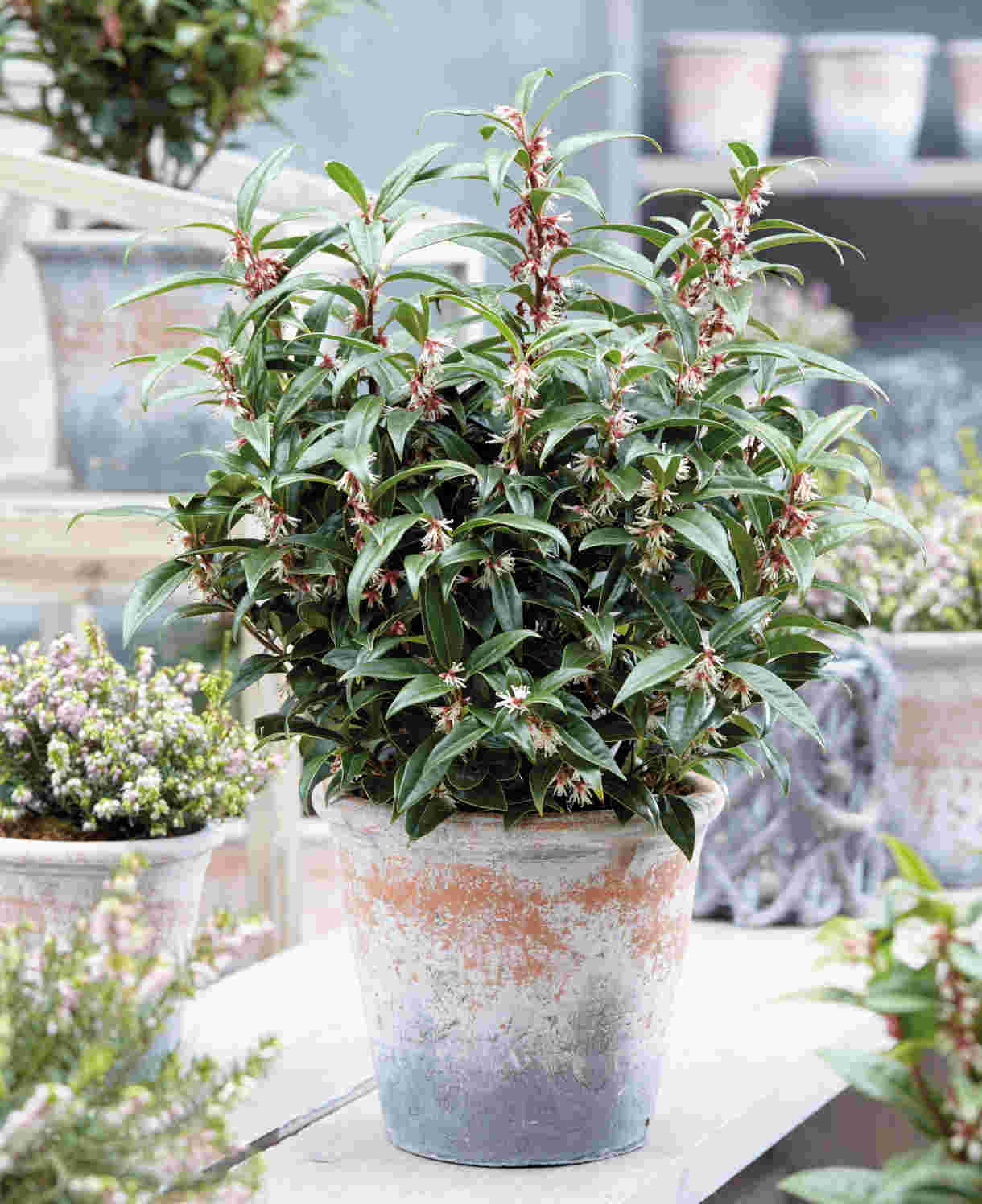
How to care for Chamaecyparis
Pruning and Deadheading
Chamaecyparis grown as a hedge should be trimmed twice a year to maintain its shape and size. Do this between late spring and early autumn. Try to avoid cutting back too hard as these plants won’t regenerate from old wood.
Otherwise, chamaecyparis is best with little or no pruning so it is allowed to retain its natural shape. A tidy in the form of removing any dead, diseased, damaged, or badly placed branches can be done in spring, along with a light trim if desired.
Watering
Chamaecyparis is a naturally thirsty plant and does best where soil moisture levels remain consistent. It’s therefore important to keep on top of regular watering throughout the growing season, especially during the first couple of years.
Aim for consistently moist but not soggy soil/ compost – allowing the top few centimetres to dry out between soakings (a finger wiggled down until moisture is detected is the best way to check this). Keep a particular eye on container-grown chamaecyparis, which can need watering as often as every day during hot, dry weather.
From mid-autumn, the British climate tends to take over watering needs, though do remember to step in in the event of an unseasonably dry spell.
One final point re. watering is the importance of an annual spring mulch (see next section), which can make a huge difference in locking moisture into the soil.
Feeding
On healthy, fertile soil, a mulch of well-rotted organic matter (i.e., a layer of leaf mould, manure, or garden compost applied to the soil around the plant) should provide enough nutrients for your chamaecyparis. This has the added benefit of suppressing weeds and locking in moisture. Mulch when planting, and then again each spring.
If you garden on poor soil or your chamaecyparis looks in need of a boost, applying a general-purpose granular feed to the surface of the soil and lightly working in can reap benefits. This is known as a top dress and should be done to coincide with mulching in spring – first apply the feed, then cover with the mulch.
Container-grown plants are different as they rely solely on the gardener for nutrition. Get off to a flying start by making sure you use a good quality compost with slow-release granules mixed in. These generally provide nutrients for around 6 to 8 weeks, after which you’ll need to apply a specially formulated tree and shrub liquid feed at the recommended dose until the end of the growing season. Remember also to repot every year or two into a slightly larger container using fresh compost.
Cold Protection
Chamaecyparis is fully hardy, and able to withstand even a cold UK winter without the need for additional protection.
Pests and Diseases
Chamaecyparis is considered trouble-free, apart from one fungal disease sweeping through natural populations in North America. Phytopthera lateralis causes root rot in C. lawsoniana (other species don’t appear to be affected) and is causing American gardeners to be rightly wary about planting this tree. The fungus has not yet been recorded in Europe.
How to propagate Chamaecyparis
This evergreen tree is best propagated by semi-ripe cuttings in late summer, using growth that is becoming firm and woody at the base but is still flexible at the tip.
- Snip cuttings off the plant, if possible taking a longer piece than the ideal eventual length of around 10cm (to allow for trimming).
- Put them in a plastic bag straight away to prevent drying out.
- Fill several pots with a well-draining compost mix.
- Trim the end of the cutting to just below a node (point at which leaves grow).
- Remove lowest leaves and soft tip, leaving 2-4 leaves.
- If the remaining leaves are large, cut them in half with a sharp knife (to reduce water lost through transpiration).
- Insert the cuttings into the compost and water lightly. Several cuttings can be put in the same container if there is enough space to do this without them touching.
- Place in a greenhouse or propagating unit if you have one or covered with a plastic bag on a windowsill if not (out of direct sunlight).
- Keep the cuttings misted and occasionally watered until they root. You will know this has happened when roots emerge out of the bottom of the container.
- Gently remove rooted cuttings and pot them into individual pots. Grow on in a cool yet frost-free environment such as an unheated conservatory, greenhouse, or cold frame, until they are large enough to be planted out.
* Many plants carry Plant Breeders Rights and cannot be propagated for commercial purposes.
Common Chamaecyparis questions
Does chamaecyparis grow in shade?
This tree will cope with a degree of shade, though grows best in full sun.
Does the wood of this tree have any uses?
Traditionally, the rot-resistant wood of chamaecyparis was used in Japan for coffins and shrines.




